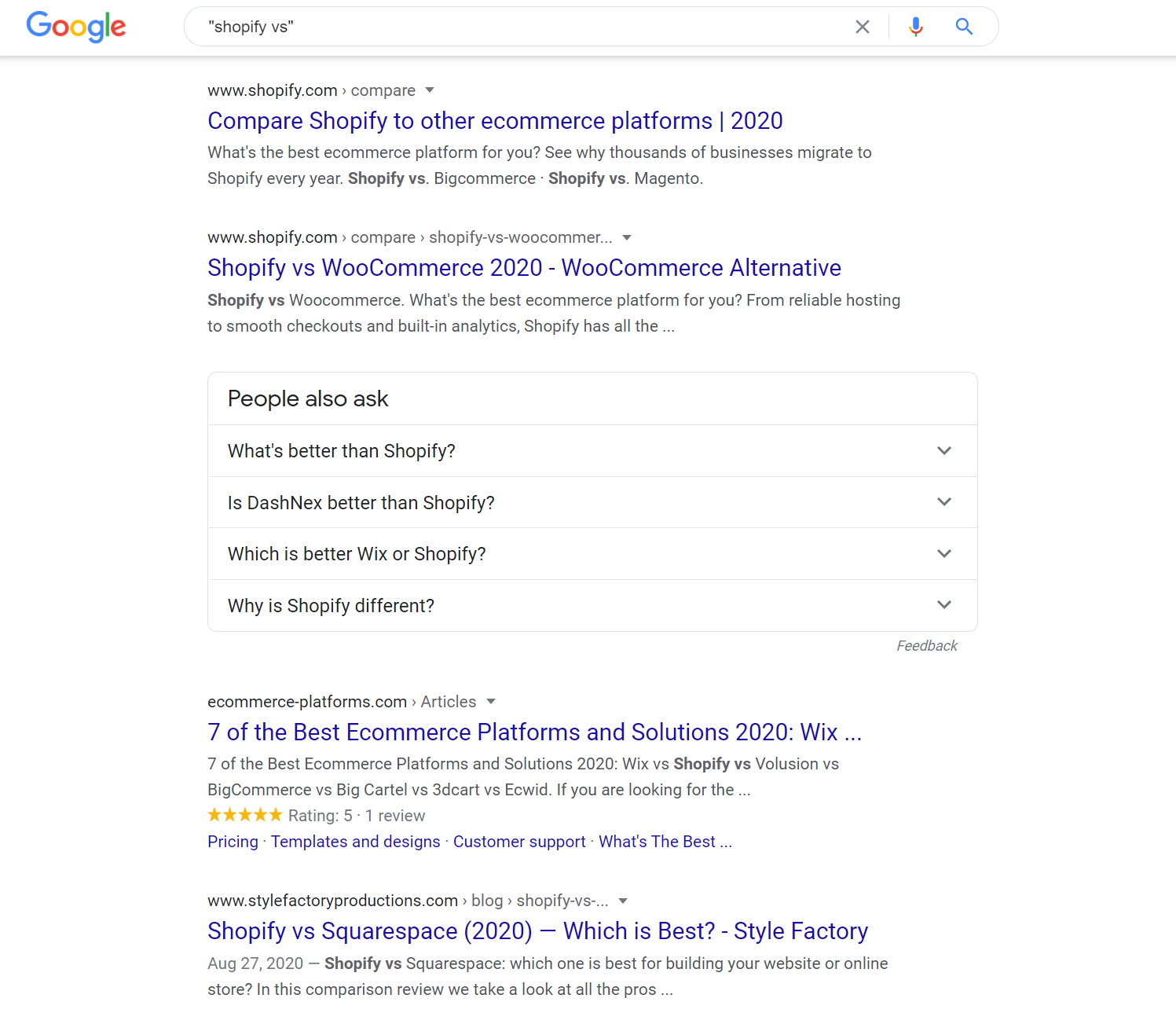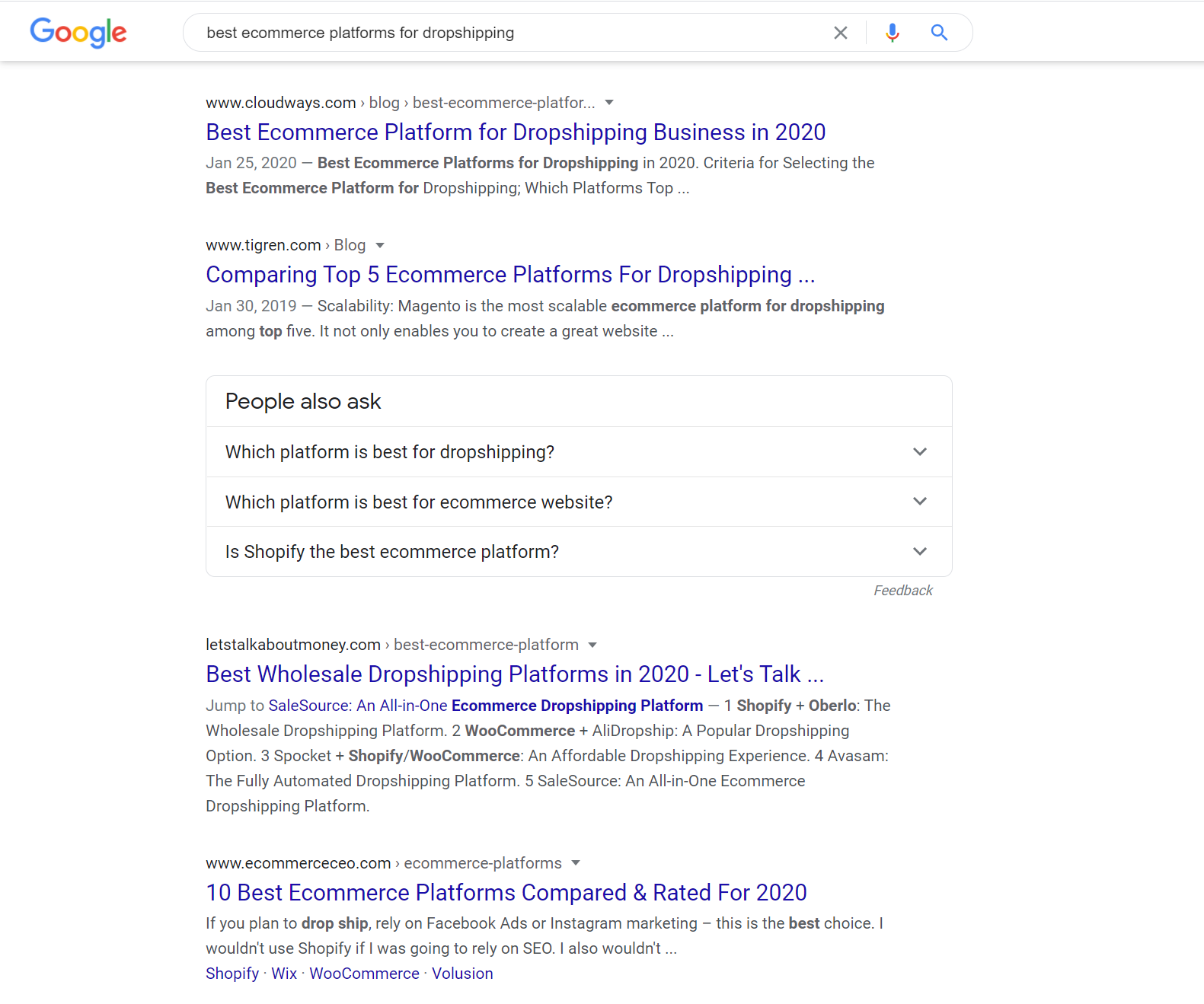Trying to squeeze into a competitive market – let alone trying to rise above larger, more established competitors – isn’t easy.
Chances are the businesses currently dominating your market know a thing or two about search engine optimization (SEO), marketing in general, and the essentials of reputation management.
So, simply having a basic knowledge of SEO won’t cut it.
You need a competitive SEO strategy that’s well-equipped to help your business gain visibility even in the most saturated of markets.
Here are three SEO strategies to help your business outrank your top-performing competitors, put your business on the map, and attract more customers.
1. Pair Up Consumer & Industry Marketing
In a competitive market, your business needs to gain visibility among consumers as well as in your industry.
Brand name recognition at the consumer level becomes more important, as does your brand’s reputation within your niche.
In terms of SEO, this means targeting informative and transactional keywords as well as commercial keywords.
Informative vs. Transactional vs. Commercial Keywords
Most businesses know to target informative and transactional keywords because these are the terms that draw in potential customers.
These are terms like “what is…” and “where to buy…” where the search intent is to:
- Find more information about a service.
- Compare costs.
- Discover new brands.
But commercial keywords are those that involve some degree of brand recognition.
In a competitive niche, you’re likely to have at least household name brands holding a place in the search results.
So how do you position your brand against those big names?
Branded Content
One option is to target keywords that allow you to compare your brand to a well-known brand.
Think review-style keywords like “[Brand A] vs [Brand B],” “Shopify vs alternatives,” or “is [Brand X] the best…”
Even if you don’t have brand recognition yet, you can create content that targets the keywords and position your brand against the competition.
At the same time, you can bank on whatever brand recognition you do have by creating content around these terms.
This ensures that it’s your site that’s ranking for your brand name, not your competitors by association.
For example, here we can see how Shopify is targeting the keyword “shopify vs” and is the top-ranking option.
So even though the search intent may be for users to compare Shopify to other ecommerce platforms, Shopify is able to control the narrative by publishing their own content.

Tap Into Sub Markets
Another option is to tap into submarkets in your industry where the competition may be a little less stark.
That way, you can drum up some brand recognition among niche groups and gain momentum in your industry that way.
Using the example above, if you are a new ecommerce platform in an already crowded market, you might choose to target a specific type of ecommerce business, like dropshipping businesses.
If you dominate that market (by hypothetically targeting keywords like “best ecommerce platforms for dropshipping”), you can get business owners buzzing about your platform and can then expand to other niches over time.

2. Run a Competitive Assessment at the Macro & Micro Level
Competitor analysis is another important component of any successful SEO strategy but becomes especially important for competitive niches.
That’s because your strategy is highly dependent on what is and is not working for your competitors.
In running a competitive assessment for a competitive niche, you should look for ranking signals at both the macro and micro levels.
Macro because these will likely be the primary ranking signals and micro because these could end up being the competitive difference makers.
Macro vs. Micro Signals
At the macro level, look at what all of the top-performing websites are doing so you can set a baseline of what your site needs to do in order to rank.
These top-ranking signals might include:
- The keywords your competitors are targeting.
- How their websites are laid out (site structure).
- Whether they’ve adopted a local SEO strategy.
- Mobile optimization.
- Website security (presence of HTTPS).
- User experience (UX).
- How often they’re publishing new content.
- How many links they have.
At the micro-level, you’ll be looking for less obvious factors that might be affecting your competitors’ rankings.
These micro factors might include:
- How their webpage and blog content is structured (number of H2s, Featured Snippet optimization, etc.).
- Internal linking structure (which pages and anchor text used).
- Where their links are coming from (anchor text, site authority, etc.).
- What their off-site marketing strategy looks like.
- Whether they have partnerships with local companies.
- Which marketing channels they do or don’t utilize.
- Voice search optimization.
- Whether they’ve submitted local listings, optimized their Google My Business, etc.
- The number and types of reviews they have.
When it comes to increasing your visibility in a competitive niche, you can’t leave any stone left unturned.
So, it’s important to look at the “best practices” ranking factors as well as the micro signals that could be affecting your competitors’ rankings.
Tools like SEMrush, Surfer SEO, and Ahrefs can help you analyze these macro and micro factors and determine a strategy that helps you tick all the boxes – and then some.
3. Create & Control Your Online Reputation
Things move quickly in competitive niches.
One day you are #1 and the next day you might be #3.
That’s because you and your competitors may be neck-and-neck when it comes to your SEO and digital marketing.
That means you can’t afford to wait for Google to take notice of your site and rank it accordingly.
You should be taking multiple steps to circulate your content to multiple channels and actively build your online reputation.
Reviews & Reputation Management
Keep track of your reviews on sites like Google My Business, Yelp, Bing Places, Yellow Pages, and other top-tier directories.
Be proactive about responding to negative reviews and actively generating positive ones.
This includes monitoring reviews and follower engagement on social media.
Respond to negative comments promptly, have a consistent online presence, and make sure you – not other brands – are controlling the narrative.
If you neglect your reviews and reputation and leave it up to chances, your competitors will see these weaknesses and eat you alive.
It’s on you to diligently generate more reviews, take control of your PR, and control the conversation about your brand.
Multi-Channel Marketing
Finally, your SEO strategy doesn’t exist in a bubble.
Social signals can certainly influence your online visibility as well as the amount of traffic that’s being sent to your site.
Again, don’t wait for Google to take notice of your website.
Adopt a multi-channel marketing approach to circulate your content across platforms so consumers and other brands have multiple chances to interact with your organization.
Social media marketing, email marketing, content marketing, and paid search marketing are all channels you can utilize on a regular basis to:
- Funnel traffic to your site.
- Drum up brand name recognition.
- Generate reviews.
- Influence your online presence.
These factors can give you a competitive advantage even if you see your search engine rankings fluctuate.
Stand Out in a Competitive Market
Go beyond the basics of SEO by implementing advanced search strategies to stand out in even the most competitive of niches.
Stay laser-focused on what your competitors are doing right, find holes in their marketing, and fill those gaps with your own competitive SEO methods.
By taking a multi-level, multidimensional approach, you can reach consumers across multiple niches and platforms as well as control your brand’s reputation within your industry.
That way, you aren’t relying on a singular approach or platform to drive traffic or influence your search engine rankings.
More Resources:
- 3 Strategic SEO Insights & Tactical Advice for 2021
- Top 10 Tools for Bulletproof SEO Content Strategies
- A Complete Guide to SEO: What You Need to Know
Image Credits
All screenshots taken by author, November 2020





